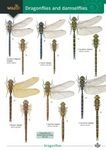![Functional Morphology of the Head-Arrester System in Odonata Functional Morphology of the Head-Arrester System in Odonata]()
Click to have a closer look
About this book
Customer reviews
Related titles
About this book
Language: English
Attachment organs of the Arthropoda are diverse in both structure and function. One such organ system may serve the fixation of structures of the body, an example of which is the head-arrester system which only occurs in adult dragonflies (Odonata).
The design of the head-prothorax transition in adult Odonata does not have analogues in the Insecta. The area, which connects the head with the neck, is very small, compared to the size of the head. It is virtually a single point, providing high head mobility in the roll, pitch and yaw planes. The disadvantage of such a design is the weak mechanical strength of this ''joint''. The arrester has the function to stabilize the head. Arrester system involves organs of two body segments: the head and the neck. It consists of a skeleton-muscle apparatus that sets the arrester parts in motion. The parts comprise formations covered with complicated microstructures – fields of microtrichia on the rear surface of head (MFH) and postcervical sclerites of the neck (SPC). The arrester immobilises the head during feeding or when the dragonfly is in tandem flight. Thus it may serve as an adaptation to save the head from violent mechanical disturbance and to stabilise gaze in the variety of behavioural situations.
Gorb''s work summarizes results of his morphological, physiological and ultrastructural studies on the head-arrester system in Odonata, and gives an overview on diverse attachment systems occurring in arthropods. It shows the evolutionary trend of the arrester in the order Odonata by using scanning electron microscopy and measurements of arrester structures in representatives of 26 odonate families. The arrester design occurring in the Epiophlebiidae, Gomphidae, Neopetaliidae, Petaluridae, and Chlorogomphinae is suggested to be the basic one. Two convergent pathways of head-arrester evolution among Zygoptera and Anisoptera are proposed. Functional morphology of the head-arrester system in Odonata includes 23 plates and 25 photoplates of SEM pictures to give a thorough impression of the design of the arrester system in different odonate taxa. Arrester function is discussed on the basis of the morphology of skeleton-muscle system, cuticle microsculpture, histochemical data, the location of the sensory organs.
Customer Reviews






































